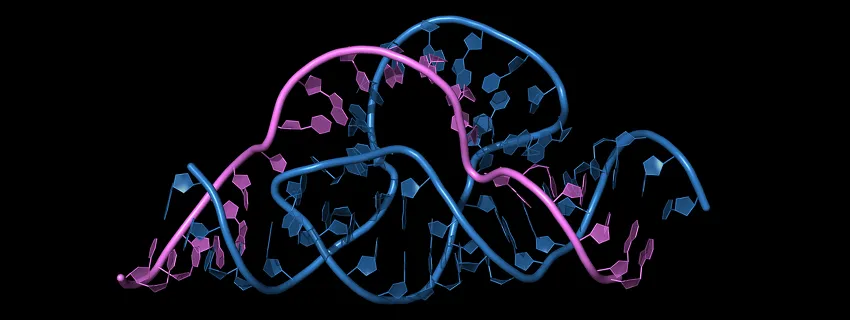
Photo by petarg, Shutterstock.
Stanford Medicine Scope - July 19th, 2017 - by Krista Conger
What goes around comes around. Just yesterday I had the pleasure of writing about chromosomal looping and gene expression, which led me down a delightful rabbit hole in which I discovered a jaw-dropping art installation in Germany that bills itself as a “walkable roller coaster.” (Go ahead, check it out. I’ll wait.)
Today I’m writing about another fun kind of loop: circular RNA molecules. These are formed when RNA molecules transcribed from linear DNA undergo the processing necessary to become efficient protein assembly manuals. Most of the time the excess RNA is degraded, but sometimes this processing, known as splicing, yields circular RNA molecules, or circRNAs.
Now dermatologist and genome scientist Howard Chang, MD, PhD, and postdoctoral scholar Ye Grace Chen, PhD, have uncovered an unexpected immune function of these circRNAs that appears to protect cells from viral infection. They recently published their results in Molecular Cell. Chen described their discovery in an email to me:
We first noticed something odd when we were exploring whether we could use circular RNA molecules to drive the expression of genes in mammalian cells. But every time we introduced the circRNA into the cells, they would die off regardless of the delivery method we used. We wondered if there might be an interesting scientific reason for this phenomena.
The researchers realized that the cells’ reaction to the circRNA depended not on its nucleotide sequence, but on how the molecule had been formed during the splicing process. As Chen explained:
We were surprised to find that the same circRNA made through two different processes caused dramatically different cellular responses. The same circRNA ‘born’ through two different processes induces two different cell fates. CircRNA produced from the type of splicing used by human cells is accepted, while the same molecule produced by a kind of splicing used by viruses induces the expression of immune signaling molecules called cytokines that protect it and neighboring cells from viral infections.
Because circRNAs were first discovered in viruses (the hepatitis D genome is a single RNA circle), it appears that mammalian cells have devised a way to recognize viral-born circRNAs and mobilize immune molecules to fight off infection. As Chang explained:
Humans have over 10,000 circRNAs. But until now it’s not been known whether or how these molecules are sensed by or evade the immune system. Here we’ve shown that foreign circRNAs potently activate innate immune signaling. This finding suggests that we could possibly protect cells from viral infection by using circular RNAs. It’s also possible that these molecules somehow play a role in autoimmunity or cancer. This is a fundamentally new system of RNA-based self-nonself discrimination.

